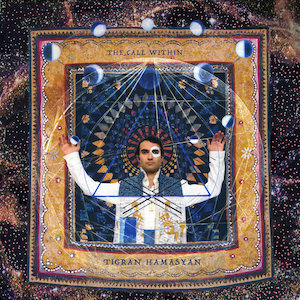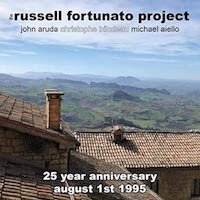Label: Nonesuch, 2020
Personnel - Tigran Hamasyan: piano, keyboards; Evan Marien: bass; Arthur Hnatek: drums. Guest artists: Tosin Abasi: guitar; Areni Agbabian: vocals; Artyom Manukyan: cello.
After two consecutive solo albums, namely An Ancient Observer (2017) and For Gyumri (2018), Armenian pianist/composer Tigran Hamasyan returns to the trio format on The Call Within, his sixth album for Nonesuch and the most fascinating thus far. Pairing up with American electric bassist Evan Marien and Swiss drummer Arthur Hnatek, Hamasyan delves deeper into dreamlike inner states, nudging the band into uncharted realms while drawing inspiration from astrology, maps from ancient eras, geometry, divine mysteries, ancient Armenian design and folklore, and many more.
The album provides several highlights encrusted with technical acuity, and “Levitation 21” couldn’t have opened the album in a better way. Incantatory chants are set against a relaxed piano-driven background; yet, on top of that, the energetic rhythmic thrust of Marien and Hnatek creates a polyrhythmic feel that completely dazzles. It’s a beautiful piece indeed, with effortless transitions in which the ethereal moods of folk and classical contrast with the powerful dynamism of progressive jazz and rock.
The eclecticism of these pieces is tremendous, and “Vortex”, a dancing astral exaltation that starts chunky at first and then becomes fluid as water, can be described as a rich stew of avant-jazz boldness, prog-metal trappings and electronica-inflected riffs.
The visionary blast of expressionism of “Our Film” contains passages propelled by squirreling beat and some others that verge on the contemplative. Featuring a pair of guests - Areni Agbabian on vocals and Artyom Manukyan on cello - this rhythmically astute piece is arranged with loops and tenacious piano moves that lean on the heavy rock stripe.
Chordal dexterity and synth beams populate “Ara Resurrected”, where Hamasyan adheres to the textural detail created by bass and drums, packing a punch with machinelike precision while exploring variable intensities. There's a sharp focus on the pianist’s melodic and rhythmic works, proving why he is considered an innovator by many. The tempestuous drumming of Hnatek comes to prominence here, as well as on “Space of Your Existence”, where he delays tempo a bit to further hype a puzzling groove.
Featuring guitarist Tosin Abasi from progressive metal band Animals as Leaders, “37 Newlyweds” goes back to the candor of traditional folk chants with a world fusion posture, whereas the closer, “New Maps”, shoves us into a scintillating, Vijay Iyer-esque web of nu jazz where no one should be indifferent.
These expertly structured frameworks are designed with imagination and a perfect sense of direction. I hope they provide the same exhilarating listening experience for you as they provided for me.
Grade A
Favorite Tracks:
01 - Levitation 21 ► 02 - Our Film ► 10 - New Maps










































